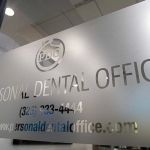Symptoms of Advanced Gum Disease: What to Watch For
Gum disease, often sneaky and painless in its early stages, can progress to a severe condition if not detected in time. In the U.S., it is estimated that nearly half of adults over the age of 30 suffer from some form of periodontal disease. Advanced gum disease, known scientifically as periodontitis, is an aggressive stage that can lead to tooth loss and may even affect overall health. Understanding the symptoms of advanced gum disease is crucial for both prevention and mitigation. Dentistry Toothtruth is here to enlighten you on what signs to watch out for and how to respond effectively.
Recognizing the Warning Signs
The first noticeable symptom of advanced gum disease is often persistent gum inflammation. While it's normal for gums to become slightly red and swollen occasionally, chronic inflammation is a cause for concern. This prolonged inflammation can cause gum tissue to break down, leading to deeper pockets around the teeth. These pockets can harbor bacteria, exacerbating the damage and potentially resulting in infections. According to sources, such signs should prompt an immediate visit to your dental healthcare provider.
Recession of Gum Tissue
Gum recession is another symptom indicating advanced gum disease. This condition occurs when the gums pull away from the tooth, exposing the roots and making your teeth appear elongated. This not only affects the esthetics of your smile but also increases sensitivity, especially to hot or cold stimuli. The recession leaves teeth vulnerable to decay and damage, highlighting the need for timely preventive measures. Seeing your dentist regularly, like our professional team at Dentistry Toothtruth, can help monitor and manage gum recession effectively.
Bleeding Gums and Bad Breath
Bleeding gums are often dismissed as a minor issue, but when experienced regularly during brushing or flossing, they become a significant marker of periodontal disease. This blood loss signals irritation and infection of the gum tissues. Additionally, chronic bad breath, or halitosis, often accompanies advanced gum disease due to bacteria buildup in gum pockets. Bad breath impacts social interactions and can decrease an individual's self-esteem, further emphasizing the importance of dental evaluations at the onset of symptoms.
Loose or Shifting Teeth
Beyond the gums, advanced periodontal disease can extend its effects to the jawbone, leading to tooth mobility. As the supporting bone structure deteriorates, teeth may feel loose or shift position, disturbing the balance of your bite. This shifting can cause difficulty in chewing, speech, and can alter the alignment of your teeth. Identifying these changes early with professional help from Dentistry Toothtruth can prevent further complications and ensure the integrity of your oral structure.
Impact on Overall Health
The impact of advanced gum disease stretches beyond oral complications. Research links periodontal disease to systemic health issues, such as cardiovascular disease, diabetes, and respiratory infections. The inflammation associated with periodontitis may contribute to systemic inflammation, posing additional health risks. Therefore, paying attention to gum health is critical to maintaining comprehensive wellness. Incorporating effective oral hygiene practices and seeking regular dental care at Dentistry Toothtruth can reduce these risks significantly.
Conclusion: Taking Proactive Steps
Understanding the symptoms of advanced gum disease is not only crucial for maintaining dental health but also for overall wellbeing. The key symptoms to watch for include persistent gum inflammation, recession of gum tissue, bleeding gums, bad breath, and mobility of teeth. Addressing these signs early with professional guidance from establishments like Dentistry Toothtruth can reverse or mitigate damage. Commit to regular dental check-ups, adopt a thorough oral hygiene routine, and remain vigilant for any changes in your oral health. By doing so, you can ensure a healthy smile and a healthier you.







 Doc Bresler's Cavity Busters4.0 (524 review)
Doc Bresler's Cavity Busters4.0 (524 review) Naples Family Orthodontics4.0 (32 review)
Naples Family Orthodontics4.0 (32 review) Steve Baerg, DDS5.0 (10 review)
Steve Baerg, DDS5.0 (10 review) Village Dentistry4.0 (130 review)
Village Dentistry4.0 (130 review) Open Door Family Medical Center- Sleepy Hollow4.0 (215 review)
Open Door Family Medical Center- Sleepy Hollow4.0 (215 review) Personal Dental Office & Orthodontics4.0 (228 review)
Personal Dental Office & Orthodontics4.0 (228 review) The Importance of Oral Health Education During Pregnancy for a Healthy Pregnancy
The Importance of Oral Health Education During Pregnancy for a Healthy Pregnancy Best Tips for Brushing Your Teeth Properly for Healthy Gums: Essential Techniques for Oral Health
Best Tips for Brushing Your Teeth Properly for Healthy Gums: Essential Techniques for Oral Health Why Skipping Dental Checkups Can Lead to Bigger Oral Health Problems
Why Skipping Dental Checkups Can Lead to Bigger Oral Health Problems Advantages of Porcelain Dental Restorations
Advantages of Porcelain Dental Restorations How Can Diabetes Cause Tooth and Gum Problems? Preventing and Managing Oral Health Issues
How Can Diabetes Cause Tooth and Gum Problems? Preventing and Managing Oral Health Issues Healthy Habits for Promoting Good Oral Health and Hygiene: Tips for a Healthy Smile
Healthy Habits for Promoting Good Oral Health and Hygiene: Tips for a Healthy Smile